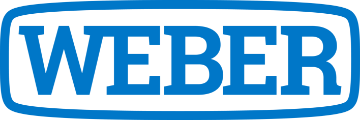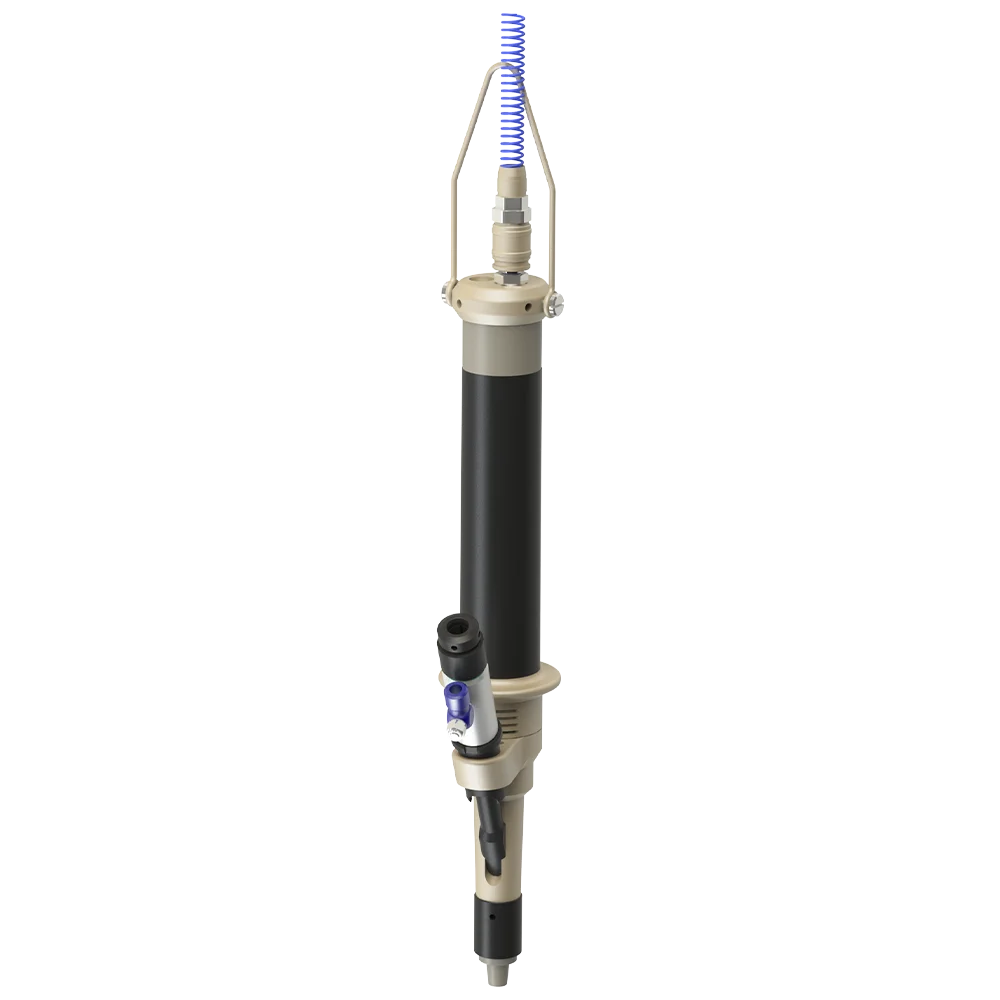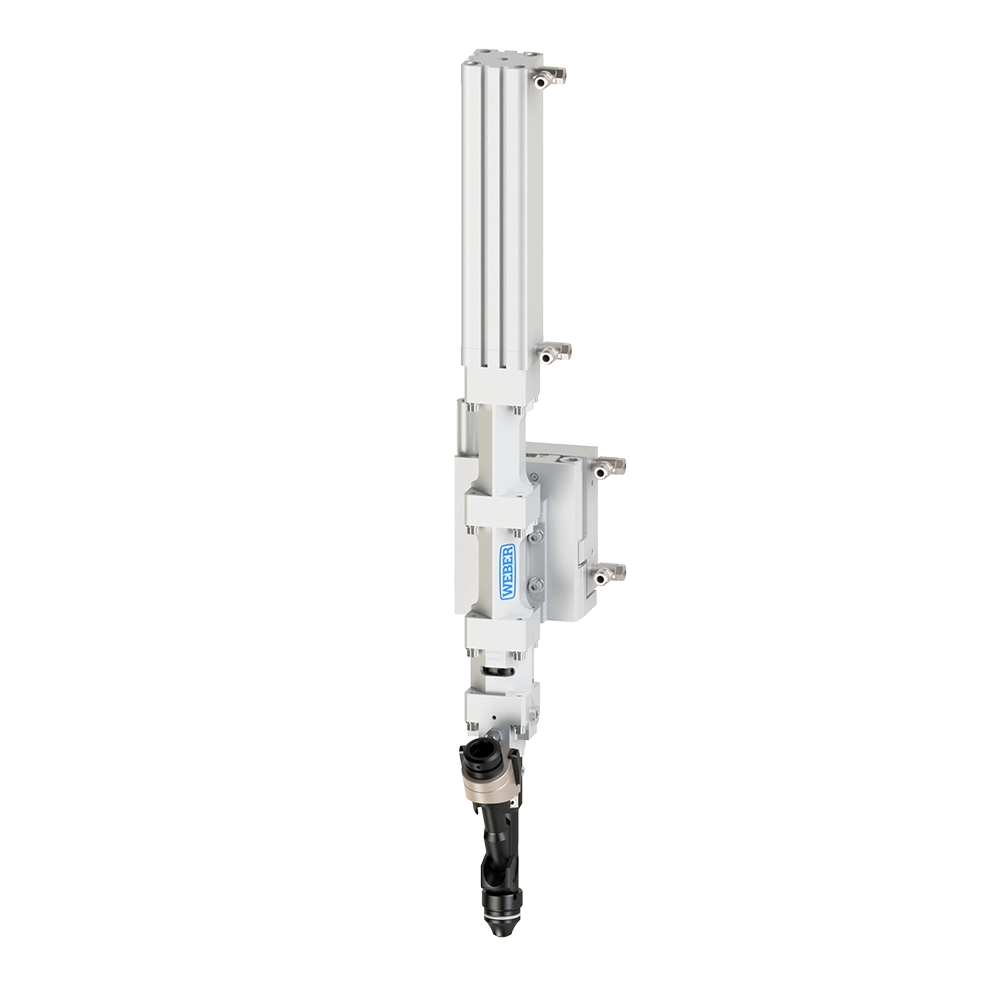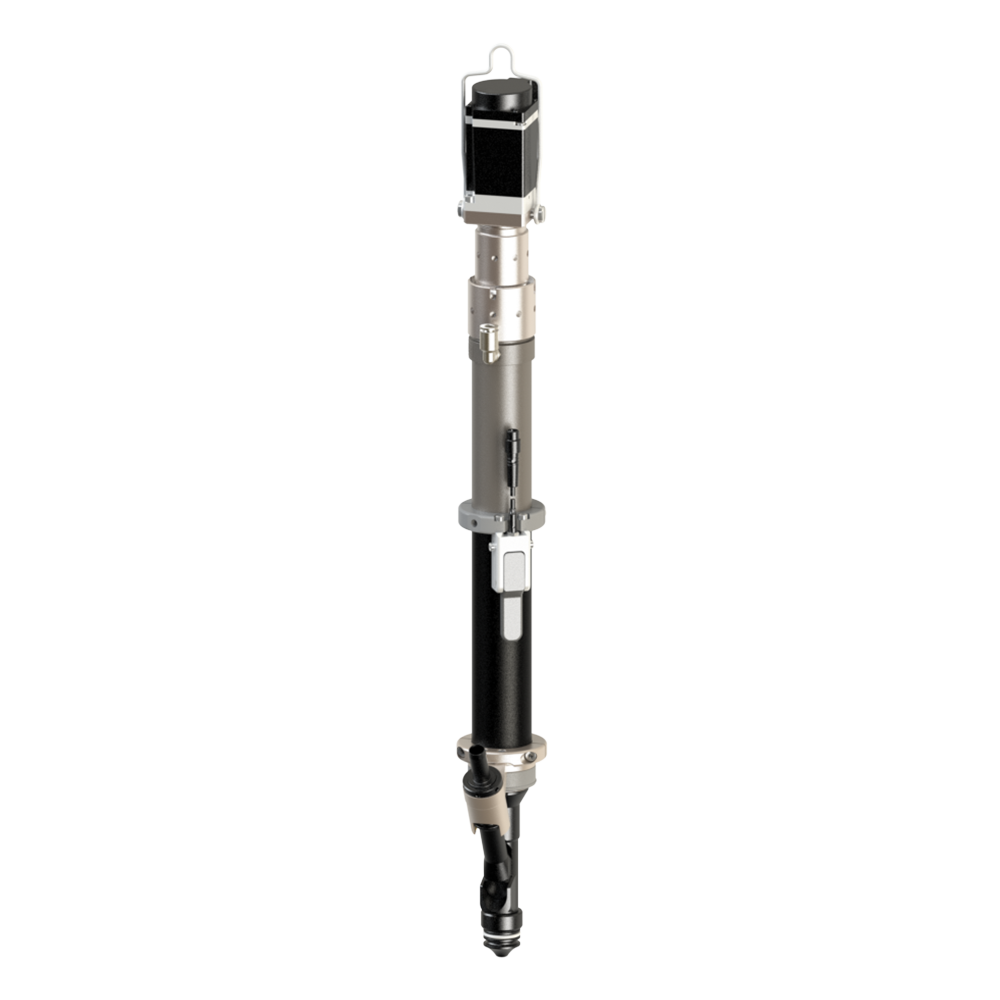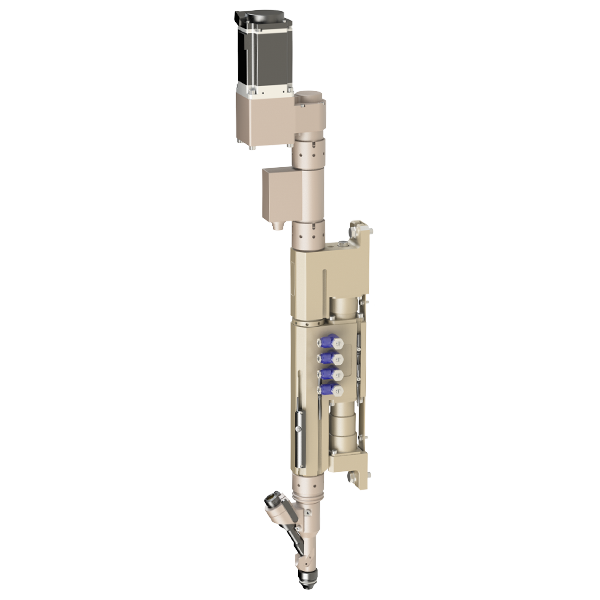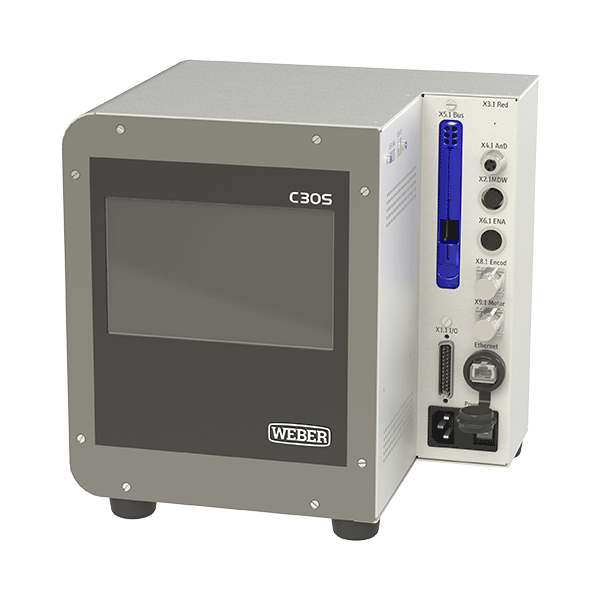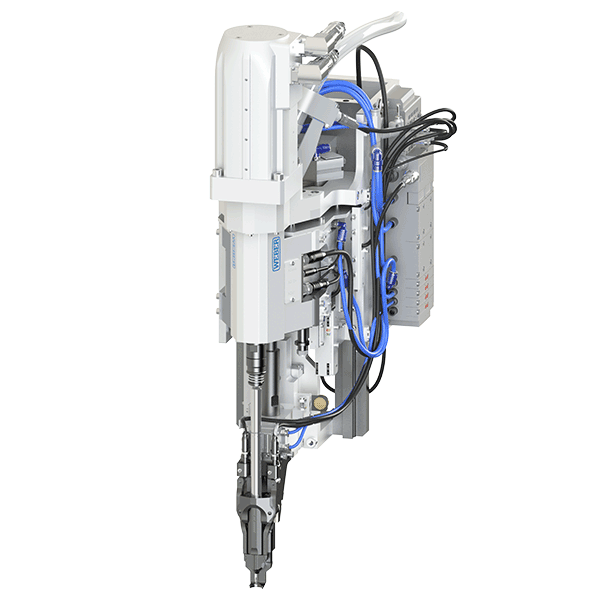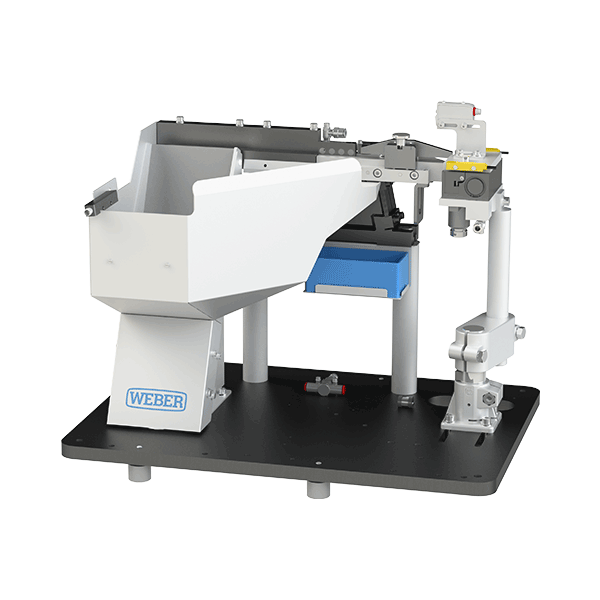Joining Technology Can Do more – WEBER Offers more. Insertion and Press-Fitting Technology is also Part of the Automation of Assembly Processes. In this Area, WEBER Offers Innovative Stationary or Hand-Held Systems. With the Setting Units and Press-Fitting Units for Pins, Bolts or Clips, Permanent Force-Fit or Force- and Form-Fit Connections are Achieved. All Systems Have Automatic Feeders or Intelligent Controls and Enable High Process Forces During Setting or Press-Fitting. Quality Control Can Take Place During the Joining Process by Means of Force-Displacement Monitoring. Each Setting Device is Pneumatically Driven.
Inserting and press-fitting technology
Our Inserting and press-fitting technology overview
Further information on Inserting and press-fitting technology
Fixtured insertion system PEB
The PEB spindle series is designed as a stationary system and is used for pressing in connecting elements. The feed force is generated pneumatically. Adapted sizes are available for a wide variety of applications. The quality control of the press-fitting process takes place via depth and, optionally, force expenditure.
Handheld system HPP
The hand-held insertion and press-fitting system HPP is pneumatically driven. This noticeably improves the handling characteristics – the press-fitting forces are minimized. With the HPP, the automatically fed connecting elements are pressed into a bore or placed on a component.
Frequently asked questions about setting and insertion systems!
How fast can elements be inserted in a fully automated system with a feed unit?
Cycle times from start – start <0.7 s are possible.
How can process reliability and quality be ensured on insertion or setting systems?
The process reliability of the insertion spindle and setting spindle is ensured with a comprehensive sensor system. Force–displacement monitoring, for example, is an important element of quality control.
What is the difference between setting and insertion?
Setting comprises joining technologies where the connection is achieved through gravity, force fitting or spring force. For insertion or pressing, on the other hand, joining elements or auxiliary joining elements undergo elastic deformation and force fitting prevents loosening of the connection.
How much setting force or insertion force can be achieved with the systems?
Handheld systems such as the HPP achieve up to 200 N, while a fixtured setting system such as the PEB can achieve up to 10 kN.
What is a an automated or fully automated setting or insertion unit?
Setting units or insertion units use pressure to create permanent force fitting or force and form fitting connections for pins, bolts or clips. An automated or fully automated setting or insertion system achieves an extremely short cycle time using automated feeding of the fasteners.
More product categories
WEBER Schraubautomaten
WEBER Schraubautomaten GmbH is a family-run and innovative company that attaches great importance to the sustainable design of the value chain. The result is high-quality products with maximum process reliability that make production processes more efficient. Your success is our success.
